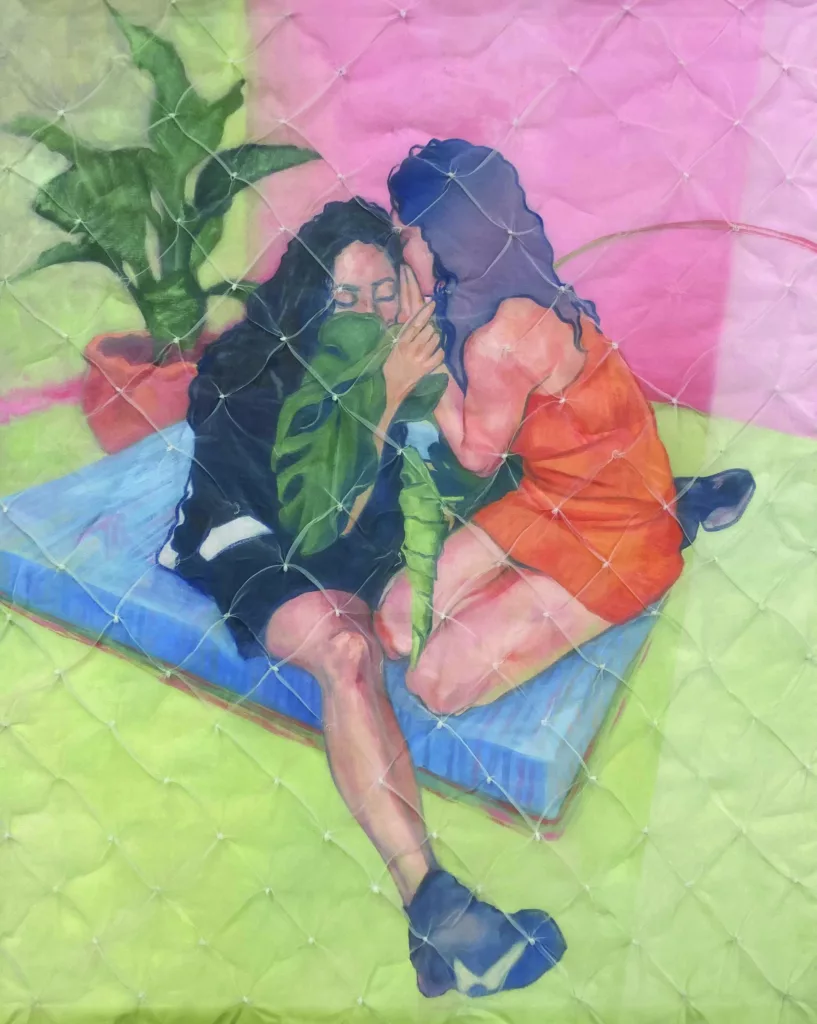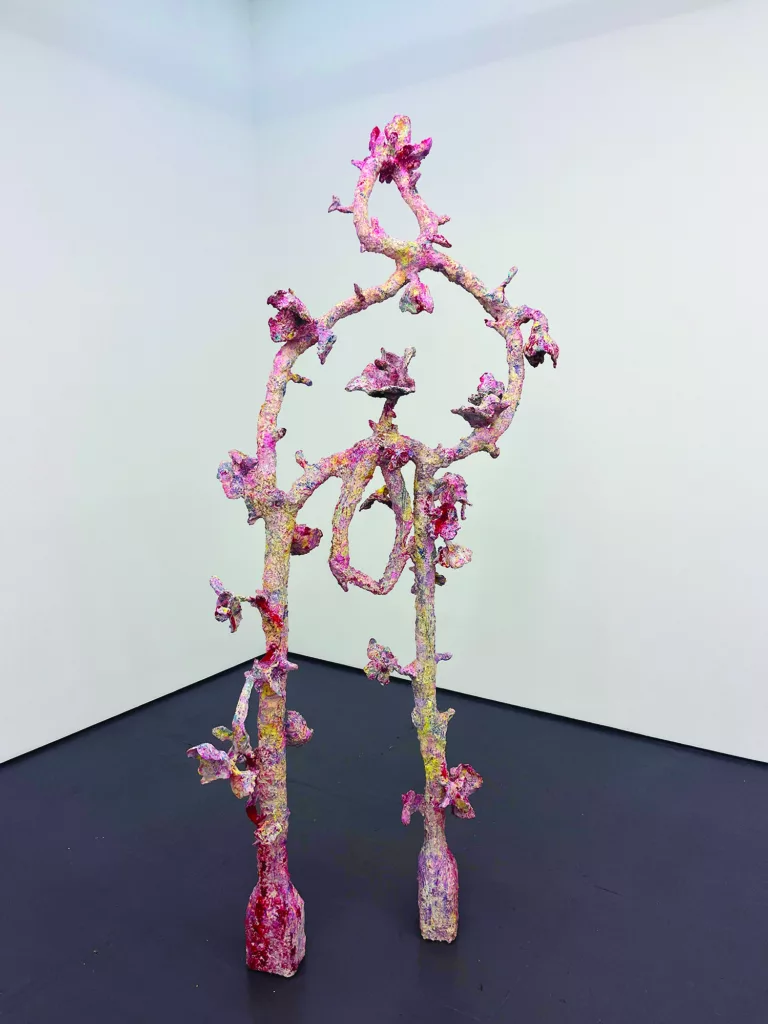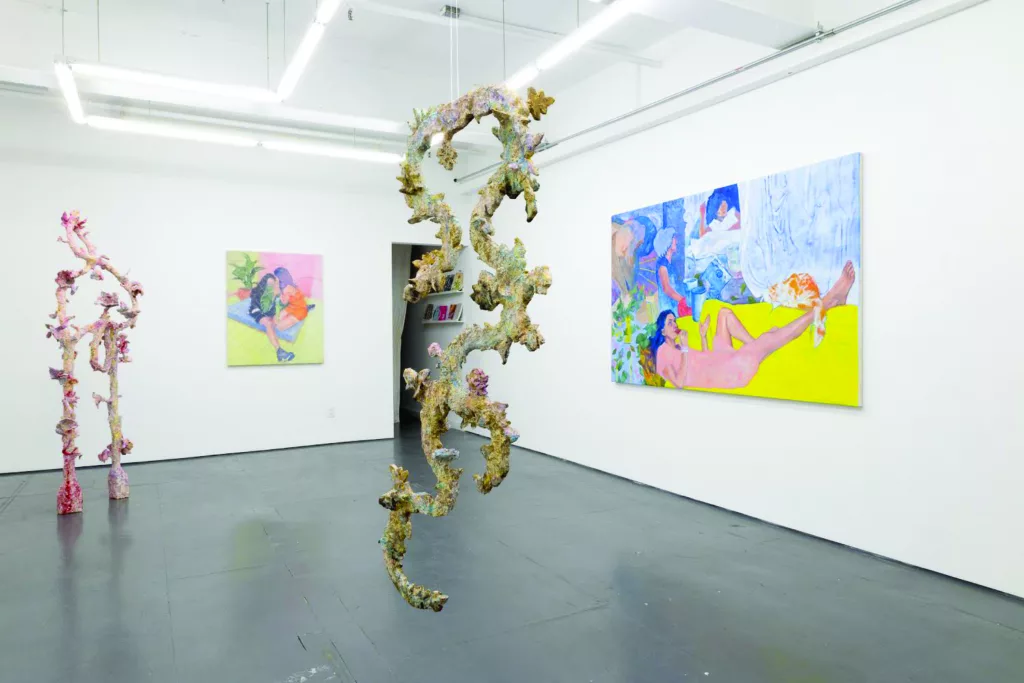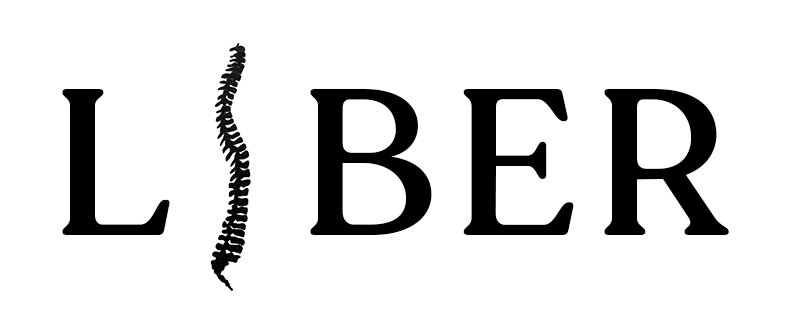
I grew up in many different places, so belonging was always fraught,” says Bayan Kiwan. She hands me a bottle of coconut water. A weak but hopeful December light pours through the grimy window of her Soho studio at Hunter College, where she is working on her MFA in studio art. (They will clean the windows tomorrow, she assures me.) Canvases cover the walls, figures on shared or parallel planes, held by draperies and foliage: women reclining, eating, talking, colluding in each other’s mysterious delight. Small paintings surround the window: one of an isolated human neck undulating in flesh tones, one of a cut-off celery heart sprouting anew. “If you don’t have a community of artists you could get very depressed,” Anahita Bagheri chimes in.

Bagheri and Kiwan exhibited their work together this fall in a show at Transmitter titled Familiar Like Skin. Bagheri moved to New York in 2022 to study fine arts at Parsons. In her native Iran, she struggled to locate like minds in what she calls “a very male-dominated university.” Her papier-mâché sculptures are inspired by Eslimi and Khataei, traditional floral design elements of Persian miniature painting, a genre that flourished in Persian courts and influenced painting from the Ottoman Empire to South Asia. She reimagines these two-dimensional designs into three-dimensional figures, layering papier-mâché over life-size armatures, then marking the surfaces with acrylic paint and crayons. She mentions that papier-mâché was historically used in Iran to make lacquered artifacts that today live in museums. “I think about making these traditions contemporary,” she says. On her figurative sculptures, the papier-mâché, like skin, “shows the marks that you hold where you are wounded.” She distressed the surface of the hanging sculpture Stem, on Fire with actual flame. “I want to make work in the space that my body takes up,” she says. In Twist, Falling, she reimagines the twining floral forms of Persian illuminations into a femme body that is wounded but still standing on two feet.
Bagheri and Kiwan were paired for the exhibition by curators Sara Meghdari and Lila Nazemian. “Community matters because you can be held in your exile,” Kiwan says. The art world is not always conducive to trust. “But when I first met Anahita through Lila, I felt like I was dealing with someone who will be in my life later.”
In her paintings, Kiwan works from disparate photographs of friends and loved ones, building the figures into enclosed, perhaps domestic spaces. “The spaces feel familiar,” she says, “maybe because all of our houses and cities have started to look the same. We buy the same furniture. We wear the same clothes.” I met Kiwan in 2020 in a virtual class at NYU, where she was studying art, gender, and Middle Eastern studies. From her living room she showed a short experimental film she made with my classmate, the Cairo-based journalist and poet Sara Elkamel. Kiwan once told me that an important transition in her life and work has been the ability to see beyond physical space. In her paintings, the space is built by “thinking about the in-between: what’s going on between this figure and that cat, or this figure and the plant? These small details that are all animated with life.”

Kiwan pulls out a copy of Wayward Lives, Beautiful Experiments. The book, by Saidiya Hartman, blends history and imagination (a method Hartman calls “critical fabulation”) to document the intimate lives of black women in early twentieth-century New York and Philadelphia—their “beautiful experiments” in community, desire, and freedom. Kiwan reads aloud a chapter titled “Wayward: a Short Entry on the Possible,” in which Hartman lists various understandings of a theory of “waywardness”: “Social poesies that sustain the dispossessed . . . The attempt to elude capture by never settling . . . To claim the right to opacity.” That last definition comes from the French-Martiniquais thinker Édouard Glissant, who argued that colonized people have the right to remain opaque, to resist colonial demands for legibility.
“These worlds that I open up do not always have to translate,” Kiwan says. “They do not have to make immediate sense to every single voyeur. Domestic space is a place where women gather away from the patriarchal and orientalist gaze. And in its distance, it can also be a site of fantasies of exotic excess, or of gendered oppression that is then used to justify extractive violence.”
Bagheri tells me that the 2022 protests in Iran began just as she moved to New York. She made plans to speak about the unrest at an event at Parsons but was discouraged by a fellow student who feared Bagheri’s comments would be misinterpreted. “But misinterpretations happen when someone like me doesn’t speak,” Bagheri says, “so I decided to speak about these things through my artworks.” It is through the sculptures she can communicate personal and collective traumas and hopes.
Kiwan says, “What makes life livable are the spaces where the small things we want are possible. It’s not some elsewhere utopia. It’s cultivated by us, together, in what already exists.”

